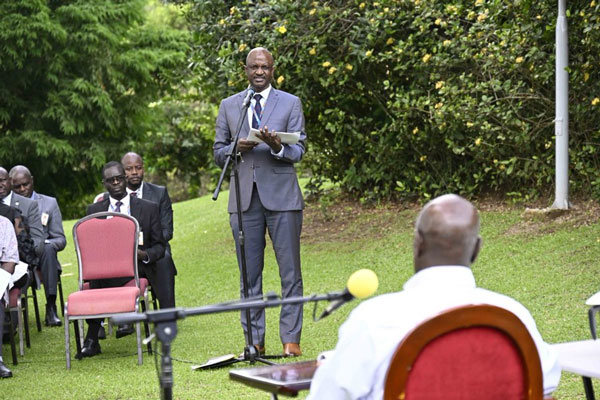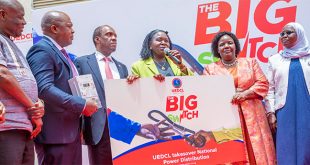
Uganda’s Middle Status: Income or Human Development?
NEWS ANALYSIS | THE INDEPENDENT | Reports from a UNDP Human Development Index released last week, that Uganda had attained middle-income status, has drawn less reactions than the 2022 announcement by government that the country had attained the necessary indicators.
Experts are of the view that it could be that the announcment has generated little excitement because Uganda stated that they had actually achieved this two years ago, or perhaps, the country faces the unexciting answer to the question, “So what?”.
Nevertheless, the United Nations Development Program (UNDP) congratulated Uganda on “attaining the indicators”, adding that the task was now to sustain the progress.
Of interest, the HDI showed that Uganda had made progress , much better than her regional peers, in improved services, especially health and education, but also, even though many Ugandans state otherwise, on personal incomes. It also said Uganda that Uganda had made progress regarding reducing social inequalities.
Uganda climbed from position 166 in 2021/2022 to 159 in 2023/2024, on the global index that ranked 193 countries and territories. The government has defended the two indicators; education and health access with evidence of physical infrastructure like health centers and educational institutions built over the years, though the quality of health and education standards continue to be questioned.
It means, however, that more Ugandans now access medical services and schools within a certain distance than was the case before. The Human Development Index (HDI), from which the country reports are drawn, is a statistical composite index of life expectancy, education (years spent in school and levels completed) and per capita income indicators.
A country scores a higher level of HDI when the lifespan is higher, the education level is higher, and the GNI (purchasing power parity) per capita is higher. HDI is divided into four tiers: very high human development (0.8-1.0), high human development (0.7-0.79), medium human development (0.55-.70), and low human development (below 0.55).
In the latest HDI, therefore, the UNDP ranked Uganda with 0.550, just at the cut-off line, up from the 0.525 score of 2021 which had kept it in the lower category. “According to the Human Development Report 2023-2024, Uganda has for the first time moved to the category of ‘medium human development’,” UNDP posted on X, repeating what officials had said during the launch of the report.
Susan Ngongi Namondo, the UNDP Resident Coordinator also said that the UN Committee on Development Policy (CPD) had announced that Uganda had attracted the requisite indicators for the lower middle-income status. It is not mentioned which population and GNI figures the CPD had assessed to determine Uganda’s status, what the per Capita income was, and whether it is in agreement with the World Bank assessments.
Middle Income Status is different from the middle Human Development ranking, as it is dependent on economic indicators based on the value of goods and services, while the Human Development Index is the value of human life or standard of living. On the income side, it means that all Ugandans combined now earn (GNI) more than what they were earning when the previous report was compiled.
Who got it wrong?GNI, which refers to the total incomes of nationals within and out of the country minus the incomes of foreigners resident in the country, is now the World Bank’s preferred method of classification of economies as opposed to GDP (a monetary measure of the market value of all the final goods and services produced in a specific period by a country).
The two measures usually offer almost the same values, but in 2022, when Uganda National Bureau of Statistics (UBoS) announced a GDP Per Capita of more than 1,046 dollars enough to put the country in the lower middle-income bracket), the World Bank said that its calculations, based on GNI showed a far different picture of 840 dollars per person. UBOS based its calculations on the financial year 2021–2022, while the World Bank used the calendar year 2021.
There were also differences in the population figures at the time, though both used the 2002 and 2014 national census results to make their 2021 estimates. However, based on the UN estimation factors, the World Bank adjusted this data upwards based on post-census surveys, by about 2.3 million people.
Who cares?
In 2021, the government reporter in the National Household Survey, that 15.5 million Ugandans (a third of the population) were in the middle-income status, which indicator, even if it could be disputed, made more sense of incomes as a show of national transformation.
According to the World Bank in 2022, Africa’s richest countries by GNI per capita were Seychelles (the only high-income economy on the continent), Mauritius, Gabon, Botswana, Libya South Africa, and Equatorial Guinea, all with GNI above 5,000 dollars per person.
This also came as countries were suffering the effects of COVID-19 which had seen more people fall below the poverty line. Nevertheless, it gives a glimpse of what to pick from a country’s Per Capita Income and the economic status or classification.
Based on the 2022 figures, for example, Equatorial Guinea, one of the richest countries on the continent by GDP, GNP, and Per Capita Income due to its vast petroleum revenues, is also one of the poorest on the continent. The World Bank shows that 76 percent of the Equatorial Guineans live below the poverty line, much like 55.4 percent of South Africans.
At the same period, the Bank said the poverty levels in Uganda, which had declined to 30 percent before the pandemic was estimated between 30 and 35 percent of the population. So, the class of a country by income does not necessarily mean a better or worse standard of living, as the wealth of the nation may as well be held by a very small minority.
Whether or not to celebrate
Under its low-income country status, Uganda benefits from special development programs with development partners, such as trade and economic agreements with some countries and blocs, which are recognised by the World Trade Organisation (WTO).
Among them is the All But Arms trade deal under which the European Union allows ports from Uganda quota-free and tariff-free. Such preferential treatments do not apply to middle-income countries and Uganda will have to forfeit them.
Jan Sadek, the Head of EU Delegation in Uganda said as Uganda moves towards achieving the status, it should focus on signing the EU-East African Community Economic Partnership Agreement to avoid trade disruptions. This was also hinted on by UNDP’s Ms Namondo. “It will cause short-term disruptions in the budget. Some things will disappear,” she said urging for proper planning for this shift.
****
URN
 The Independent Uganda: You get the Truth we Pay the Price
The Independent Uganda: You get the Truth we Pay the Price



